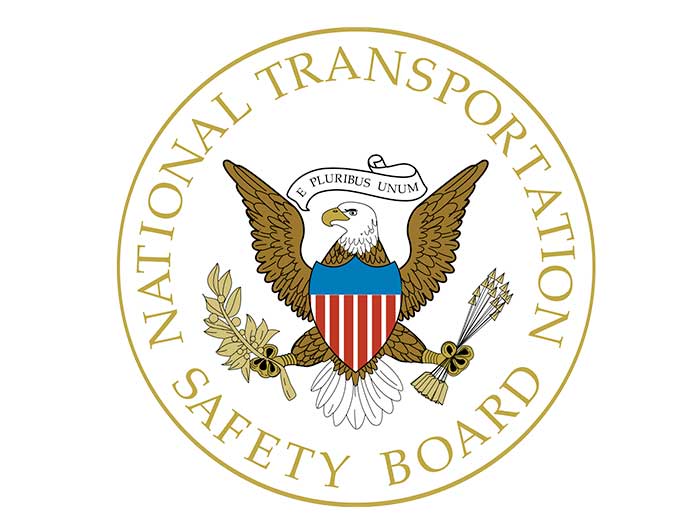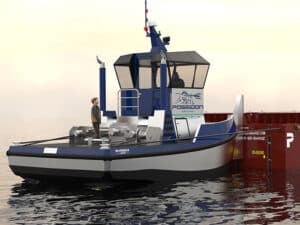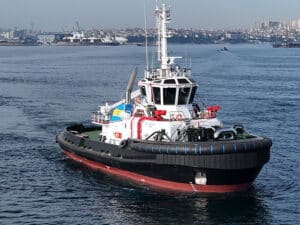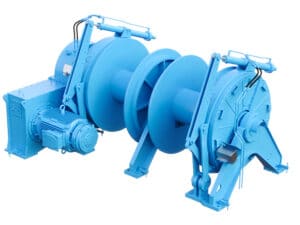
NTSB says failure to maintain crane barge led to $6.3 million loss
Written by Nick Blenkey
Image: NTSB
In its latest report involving a crane barge accident, the NTSB says that an owner’s lack of inspection and maintenance led to the capsizing and sinking of a crane barge last year in the Gulf of Mexico.
The crane barge Ambition was being towed when it capsized and sank on June 15, 2022, releasing an estimated 1,980 gallons of oil. No injuries were reported. The Ambition, owned by Rigid Constructors, and its crane were a total loss estimated at $6.3 million.
The 195-foot-long by 70-foot-wide uninspected crane barge was constructed of welded steel, with two spuds on the port side. It had a depth of 10.5 feet, a raked bow, and a square stern. It was purpose-built by Diamond “B” Industries of New Iberia, Louisiana, to accommodate a crane by welding together two existing deck barges and was delivered to Rigid Constructors in June 2020. The port barge, GD 962, was constructed in 1995, and the starboard barge, GD 983, was constructed in 1998. Each of the barges, purchased by Rigid in March and April 2020, had one longitudinal watertight bulkhead that ran from the rake void bulkhead to the stern void, along with five transverse watertight bulkheads.
Due to the height of the crane, the Ambition was being towed offshore in the Gulf of Mexico to reach its destination. However, the Ambition did not have a load line certificate, exemption or designation for special service approved or issued by the U.S. Coast Guard. Before getting underway, a deckhand on the towing vessel, the Karen Koby, owned and operated by LA Carriers, conducted an inspection of the barge, noting hatch cover gaskets were not in place and not all the hatch cover lids were physically locked. At least six hatches were not covered or secured. He also noted visible hull damage.
During a post-salvage examination, investigators found a 25-foot-long separation along the weld seam between the bilge knuckle and bottom plates. At some point, a temporary repair, consisting of steel plates, had been made to the area around the separation to contain water ingress. Based on the hull plating separation and wastage on the interior bulkheads, the NTSB determined the poor hull condition was the cause of the initial flooding.
According to investigators, Rigid Constructors failed to conduct permanent repairs in an area critical to hull strength, and the separation between the bottom plating and the bilge knuckle plating progressed beyond the temporary repair.
The NTSB determined the probable cause of the capsizing and sinking of the Ambition was the barge owner’s lack of hull inspection and maintenance, and not conducting permanent repairs, which resulted in the failure of the hull and subsequent flooding.
“To protect vessels and the environment, it is good marine practice for vessel owners to conduct regular oversight and maintenance of hulls, including between dry dock periods,” the report said. “An effective maintenance and hull inspection program should proactively address potential steel wastage, identify hull and watertight integrity deficiencies, and ensure corrosion issues are repaired in a timely manner by permanent means.”




